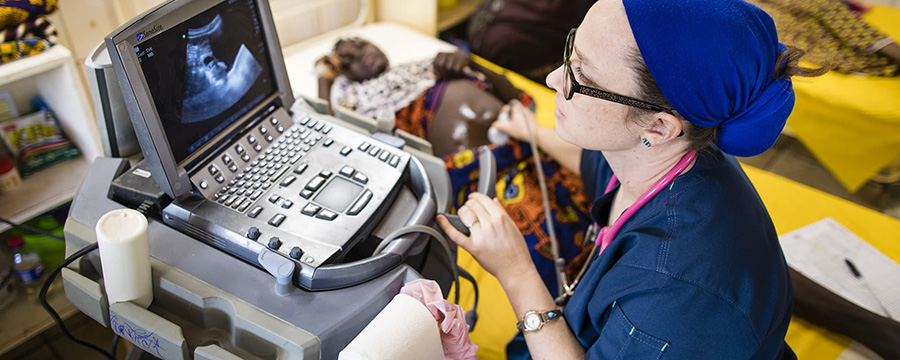#HC-03-44 Medical Equipment Donations to Low Resource Settings
About Course
St George's, University of LondonDescription
Navigate the pitfalls of planning and organising donations of medical equipment
Unavailability of essential clinical equipment can be a serious problem in low-resource settings.
Whilst medical equipment donations can play a critical role in filling gaps, without careful planning, donations can fail and even become a burden on the receiving institution.
On this course, developed in collaboration with the Tropical Health Education Trust (THET), you‘ll learn best practices in planning a donation of medical equipment to a low-resource setting.
You’ll discover how to decide what to donate to have the greatest long-term impact, how to ensure your donation will be sustainable, and the key pitfalls to consider.
Get practical advice on shipping, costs, and funding
Using case studies of successful donations in different contexts, you’ll have the opportunity to discuss and develop your ideas with other learners.
You’ll also cover organisational issues like deciding on where to buy the equipment, shipping, customs, and costs to budget for.
Does this course feature coronavirus-specific advice for clinicians?
Yes. At the end of the course, you’ll be introduced to funding schemes that you can apply to today and specific reference will be made to issues related to the COVID-19 pandemic, including the challenge of sourcing high-quality Personal Protective Equipment during this time.
What topics will you cover?
- Introduction to the challenges of healthcare in low-resource settings
- Planning a donation: assessing what is needed
- Feasibility and sustainability – is this going to work?
- Options when sourcing the equipment: local versus international suppliers
- Second-hand equipment donations
- Medical device regulations
- Usage and maintenance supplies
- Budgeting and hidden costs
Who will you learn with?
I am a junior doctor in London, and trained at Cambridge and UCL. I have worked on global health projects in Tanzania, Kenya and Switzerland, and did my medical elective placement in Peru.
I am a Final Year Medical Student at St George’s, University of London. I have a BSc in Medical Sciences with interests in Global Health and Healthcare Leadership.
I am a Senior Lecturer in Medical Ethics and Law at St George’s, University of London. I have studied medicine, philosophy and medical education. I have also completed a PhD in Law.
Who developed the course?
St George’s is the UK’s only university dedicated to medical and health sciences education, training and research.
What Will I Learn?
- Identify important stakeholders and other resources to consult when planning a donation of medical equipment.
- Describe the different steps in the medical equipment lifecycle, and consider what will be required at each stage to ensure the donation is both feasible and sustainable.
- Assess common risks and pitfalls that may threaten the success of a donation.
- Evaluate the different options available when sourcing equipment to donate, considering quality, the pros and cons and sustainability.
- Describe which costs to include when budgeting for the cost of a donation, and describe an example of how to structure a budget.
- Debate specific issues around the donation of equipment during the Covid-19 pandemic, including the problem of counterfeit PPE.
Topics for this course
Deciding what to donate
How might you decide what is needed?
Deciding what is needed: Consulting local stakeholders and essential equipment lists
Planning your donation: what information to gather
Local and national procurement policies
Donating medicines and medical supplies
Feasibility and sustainability – is this going to work?
Summary
In this course, my favorite part is about the introduction of the challenges of healthcare in low-resource environment and the regulations of second-hand equipment donation of medical devices and the use and maintenance supplies. I like the course very much.
The course covers various organizational issues, such as deciding where to buy equipment, transportation, customs, and cost budgeting. The course also provides us with detailed information on the funding schemes currently available and will make specific reference to issues related to the COVID-19 pandemic, including the challenge of procuring high quality personal protective equipment during this period. All the details. It's great.
After COVID - 19 this year, there will always be surrounded by a lot of people donated supplies, in this course I found how to decided to donate what will have the greatest impact for a long time, how to ensure that our donation is sustainable, and the key to consider trap gain practical advice about transportation, costs, and capital, let me get to where our donations at last. It's a great course, and those who are interested can study it.
Developed in collaboration with the Tropical Health Education Trust (THET), the course allows me to learn best practices when planning to donate medical equipment to resource-poor environments. It's really nice.





